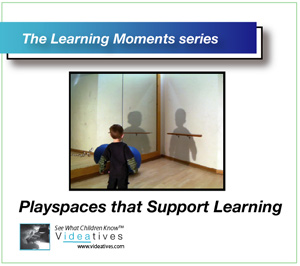ExchangeEveryDay Past Issues
 << Previous Issue
| View Past Issues | | Next Issue >>
<< Previous Issue
| View Past Issues | | Next Issue >> -William Hazlitt
"Developing children’s aesthetic awareness starts with the teacher’s choices about how the classroom is set up: the materials presented to the children, and the manner in which they are displayed. It is seeing that the paints are fresh each day and maintaining a sense of order by creating a separate space for each object. It is arranging and rearranging wall displays throughout the year and making the mainstay the work of the young artists in your classroom. Creating an aesthetic sense also has to do with simplicity: knowing that clutter is counter-productive. Blank spaces on the walls allow the eye to rest and the body to relax.
"An aesthetic sense can also be heightened by having live plants and flowers growing in your classroom to look at and wonder about each day. These lend beauty, color, and fragrance in subtle but satisfying ways. Keeping an aesthetic sense alive calls for a great deal of thought and planning that is woven into the very fabric of who you are, how you think, and how you choose your actions. It is like an artist who mixes the colors from her palette, overlaying the colors, one atop another until the blending creates just the right shade of color she sought."

Learning Moments CD - Playspaces that Support Learning
This Learning Moments CD (for use on a computer) presents 10 real-life video files that are the perfect compliment to workshops, lectures, and online courses on how the design and preparation of the environment support young children's learning. The clips include children from infancy to five years of age.
ExchangeEveryDay
Delivered five days a week containing news, success stories, solutions, trend reports, and much more.
What is ExchangeEveryDay?
ExchangeEveryDay is the official electronic newsletter for Exchange Press. It is delivered five days a week containing news stories, success stories, solutions, trend reports, and much more.
-6 courses, 18 credits
-meets standards for program accreditation
-graduate & undergraduate degree pathways
#1. Autism in the Pre-K Classroom
Dr. Mike Assel, Children’s Learning Institute
#2. Online Professional Development Opportunities
Kara Lehnhardt
Fresh and exciting curriculum for teachers is coming soon! Parent Pages is a newsletter (in English and Spanish) you can personalize and reproduce––Use all of the pages or just an article or two. Our online resources are added to regularly.




Comments (3)
Displaying All 3 CommentsDET
Canbera, ACT, Australia
The aesthetics of a care centre is important for children's mental and physical well being.
The importance for children to feel comfortable within their centre, creating a sense of belonging.
Children need to see themselves in the rooms.they need to have an organized well set out place were children can find what they need to play with,with regularity. Play equals learning and cognitive development which helps the child to feel good about themselves creating great self esteem, in this way we are creating healthy children who grow into mentally and physically healthy adolescents and adults.
When we use natural materials that are real, with care from cares that is respectful,responsive and reciprocated then we are providing children with a nurturing place for them to feel safe and secure and happy, children then grow into the best that they can be.
Poor environments that are cluttered, over stimulating that are filled,with broken plastic toys cause frustration and anger which cause behavioral problems contributing to poor self esteem.
United States
somewhat of a feng shui approach
Spirit Child Yoga and ECE
Aurora, ON, Canada
Thank you for highlighting this often over-looked issue. Many early learning and care environments are as visually noisy as a casino, or a flea market. Adults enjoy natural colours, plants, gallery or spa-like atmospheres. Then we subject our children (and those who work with them) to brash colours, junky plastics, REALLY BAD homedrawn paintings of commercial cartoon characters, and all sorts mixed colours, fonts, textures, things hanging from the ceilings, etc! How does that affect behaviour? How does that affect mood? How does that affect the children with undiagnosed learning disabilities or sensory issues?
I suggest that aesthetic awareness be added to the environmental checklists - the sooner the better.
Post a Comment